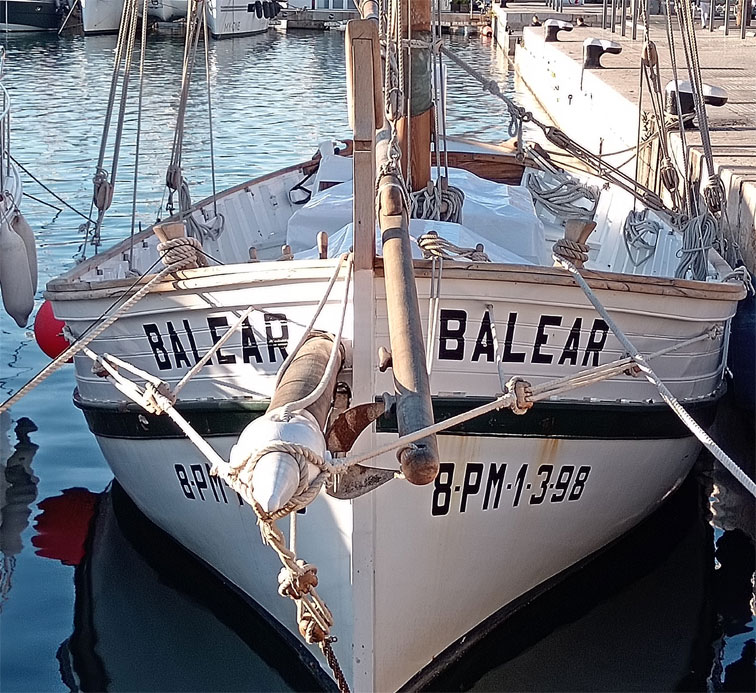
Sailing around Mallorca
Let’s imagine 9 friends, now of an age and financial stability that allows them to enjoy more of life’s pleasures. Eating well is one of them, and travelling and seeking adventures is another great incentive. Let’s continue imagining… on a hot summer’s day in 1899, our protagonists get together, and after enjoying a good meal, a chat and laughter together, they decide that they must continue to make the most of the summer. They are in a village on the southeast coast of Mallorca, where the sea is the bluest, brightest and most crystalline, the Mediterranean in its purest state. The idea is to sail around the island, eating and sleeping wherever they can, in full contact with nature and the sea. An expedition to discover the island, experience a thousand and one anecdotes and strengthen their friendship. In this post we will explain what it was like sailing around Mallorca in Llaut, in 1899.
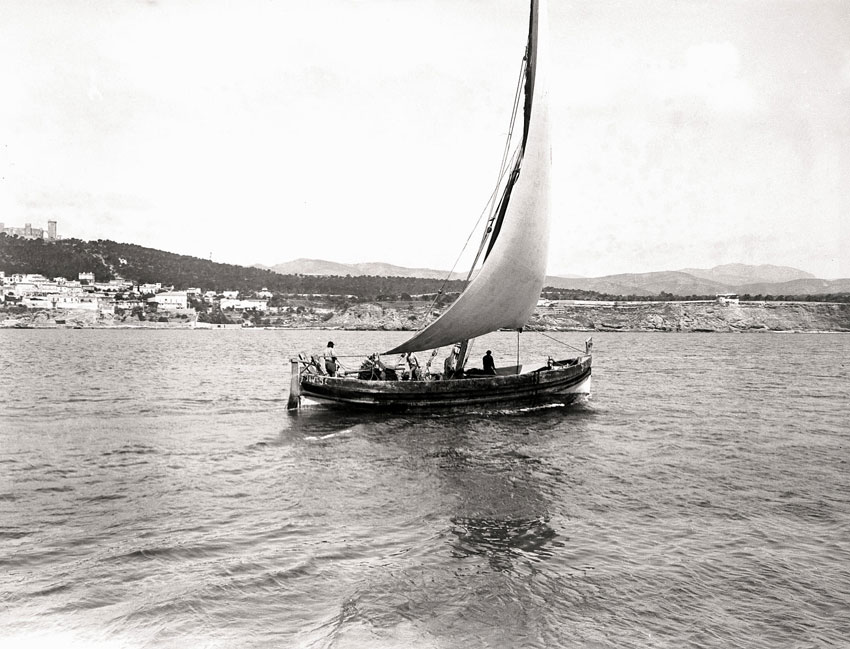
Year 1899, the period, historical context
Spain was in a deep crisis, both economically and morally, because in 1898 it had lost the last colonies of the once great Spanish empire: the Philippines, Puerto Rico and Cuba. King Alfonso XII had died a few years earlier, and his wife, Queen Maria Cristina, had been left as provisional regent of the country until her son Alfonso could become king. The governments only lasted a few months and the president changed every few months, these were very turbulent times for Spain.
Things were not easy in Mallorca either, as the colonies and the soldiers stationed there were a large market for the footwear and textiles manufactured on the island. All this source of work and income disappeared when the overseas territories were lost. At that time, the island was heavily dependent on the countryside and agriculture, and in 1891 the phylloxera epidemic that had already devastated the vineyards in Europe also reached Mallorca. The disaster was enormous and grape production fell by more than 90 %, so that wine exports to France came to an abrupt halt, and countless workers were left without work. A final consequence was that thousands of Mallorcans had to emigrate, whether to France, Algeria or America.
The story, how did we learn about it?
In any success story there is always a combination of inspiration, good work and a certain amount of luck. Inspiration because a group of friends, inspired and in a good mood, decided to organise this adventure. The laborious and detailed work of the scribe, who wrote down everything that happened on a daily basis. And, above all, luck, which meant that after more than 100 years Sebastián Adrover found some boxes with the original manuscript of this adventure in an attic at home. Sebastián read with great interest these documents, which were several: Minutes of the project / Diary / Account of the larder / Cash book and Signatures in the caves of Artà.
He was fascinated by the story and decided to bring together several experts in different subjects. The aim was to publish a commemorative book about the 1899 round trip around Mallorca in Llaut, with contributions from various specialists on historical, nautical and gastronomic topics. This was achieved in 2023, and the result is the precious edition with the title ‘9 – Diario de la expedición santañinera alrededor de la isla de Mallorca’, published by El Gall Editor.
The protagonists of the expedition
Several friends, part of the ‘Grupo excursionista de la villa de Santanyí’, with a high socio-cultural level as can be seen in the original document, which is well written and has a very elegant and polished handwriting. They probably also had a well-to-do economic situation, since at that time normal people spent almost all of their time working to support their families and there was little space left for leisure and holidays. As a group they must have been restless and fun-loving, as there is an ironic and cheerful tone in their writings, for knowing how much they enjoy meetings and meals, they call themselves members of the ‘Real gremio de atiborradores’.
The project
In an act signed on 25 June 1899, they decide that they are going to set out the sailing around Mallorca in a Llaut, and with a jocular approach, they divide up the roles for the expedition: Who will be the Commodore? The chief to be obeyed… there is no doubt and it will be Nicolau Clar. Who will be the captain of the boat? Jaume Antich. Other very important positions, such as the handling of the money, which will be in the hands of Llorenç Bonet, ‘the purse man’, Toni Vadell, the cook, or other more peculiar ones such as ‘an intrepid’ (Pere Bordoy) or ‘the horn player’ (Jaume Antoni Clar) will also be nominated.
Each of the participants will contribute 55 pesetas, making a total budget of 495 pesetas, which will be used to buy provisions or meet other expenses that may arise during the trip. By way of reference, it should be noted that a farm worker earned approximately 1.50 pesetas a day.
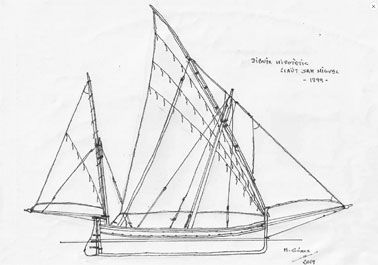
The boat, characteristics
This expedition was made in a Llaüt, a very typical boat in the Mediterranean and also on our island. The ‘San Miguel’ was built in wood and it was probably a coastal Llaüt, a cargo or passenger ship. Considering the number of crew members who travelled on it and other details that are recounted in the ship’s logbook, it was probably between 12-13 metres long (length) and about 4 metres wide (width). They were built right here in Mallorca by the renowned ‘Mestres d’aixa’ and in those days they did not have an engine, but moved under sail. They could have 1, 2 or even 3 masts, rigged with a lateen sail, while the bow was straight and the stern was rounded. The most common layout was 3 cabins in the bow, 1 chamber in the stern that served as a dining room or saloon and up to 4 side cabins. They were usually white, and the whole was always a very seafaring vessel, with a classic and elegant image.
Provisions on board
In those days, there were no home-delivery systems, no fridges or freezers, and of course there was no network of coastal supermarkets to stock up on supplies. Although they were always going to sail fairly close to land, the expedition members were very careful about the supply of foodstuffs. It should not be forgotten that they called themselves members of the ‘Real grupo de atiborradores’ and that good food was not to be lacking. And so, according to the documents, we know that they carried wheat, flour, rice, noodles, pine nuts, wine, brandy, tea, camomile, potatoes, onions, peppers, spices, salt, olive oil, ladder, cheese, eggs, sobrasada and a flayed goat. In addition to this a casserole, glasses, firewood, wicks, and logically a mattress and blanket to sleep on and palm hats to combat the summer sun. As apart from having a good time, the important thing was not to go hungry, they also went shopping in small shops in the ports where they made landfall.
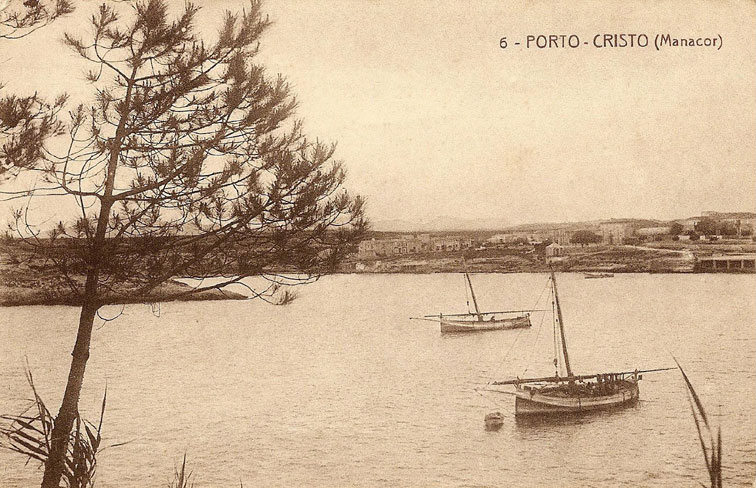
Let’s start!!! route, stops and end
The day after the feast of Saint James, 26th July 1899, the expedition set off from Sa Cala, in the southeast of Mallorca. They would circumnavigate the island in an anti-clockwise direction, heading north.
The chronicler, Miquel Clar, keeps a diary of what happens on board, and recounts the stages they make: Cala Santanyí, Porto Petro, Porto Cristo, Cala Canyamel, Cala Ratjada, Puerto de Alcudia, Cabo Formentor, Torrent de Pareis, Sa Calobra, Port de Sóller, Banyalbufar, La Dragonera and Puerto de Andraitx. Particularly noteworthy are the stops with visits to the caves of Porto Cristo and the caves of Artà, which are recounted in great detail.
The Diary ends abruptly on the 5th of August, with the last notes about the port of Andraitx. We do not know if the following pages were lost, if the scribe no longer wanted to continue his work, or if they simply argued and put an end to the expedition, although we have evidence from the account in the larder that several days later they still bought 2 melons in Palma. On the 13th of August 1899, everything was settled and the accounts for the trip were closed in Santanyí.
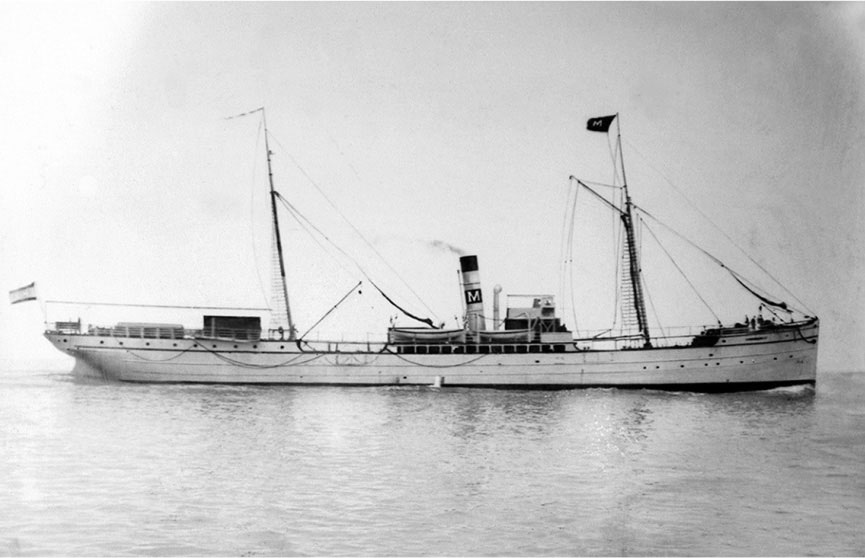
An anecdote
The Diary can be read in a few hours. A pleasure that places you very well in the time and in the concrete situations they experienced. A simpler and quieter existence, less technified, but not exempt from many of life’s attractions, as we can see in this little anecdote:
On arriving in Alcudia, the travellers split into two groups to visit the town and, on meeting up again, one of them presents the ‘bagman’ with a summary of the expenses incurred on land:
‘…for 2 kilos of meat – 12 reals / For two glasses of brandy – 10 cents / The moraduix was given to us by a girl / For the commitment of seeing two girls we had to enter an establishment and we spent for them and ourselves, one real / For a rope for the “mingüela” to amuse these two girls – 10 cents …’.
Perhaps some were still single, or perhaps not, but what is evident is that meeting some nice girl was also part of travel and adventure …
Conclusion
In 1899 Palma was a city with just over 62,000 inhabitants, whereas today, in 2024, it has more than 423,000. Many more than those who lived on the whole island of Mallorca at that time, some 245,000 in total. We can imagine a very provincial society, largely rural, and a time when many Mallorcans living in inland villages had never even seen the sea. Circumnavigating the island must have been quite an adventure, and discovering other villages, such as the remote Sóller, was quite an event for our travellers. The original manuscript gives us a magnificent view of what the island was like at that time, the low cost of things, the simple transport by mules and carts, the first ‘picture machines’ (photography) or the use of the telephone, the great importance of the Christian religion in all areas… In short, a written portrait of a bygone era.
For those who enjoy the pleasure of reading, we recommend the aforementioned book by Sebastián A. Adrover Vicens: ‘9 – Diario de la expedición santañinera alrededor de la isla de Mallorca’, on which we have based this post.
And for those who would also like to accompany this reading with a good wine, you can try one of the bottles of Mallorcan wine, from the Son Alegre cellar and dedicated expressly to this expedition.
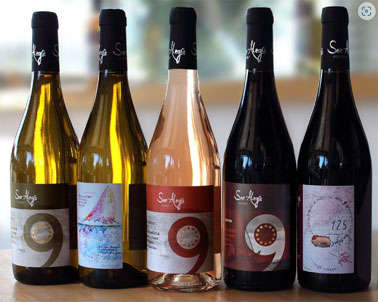
Would you like to taste his wines? Follow the link to pour online-shop:
